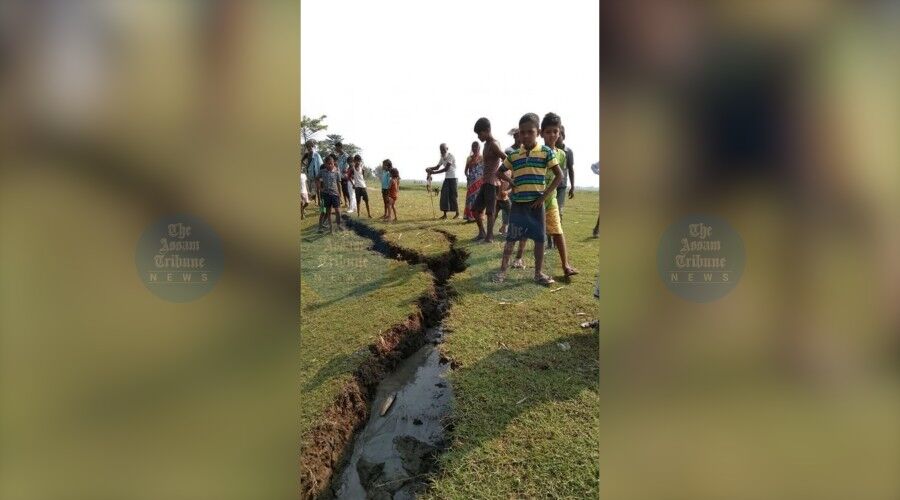Researchers have identified the 300-km Kopili Fault zone in Assam as highly active and capable of producing earthquakes over magnitude 7. A recent magnitude 5.0 quake occurred near this fault, close to the 2021 Sonitpur earthquake site, highlighting its seismic vulnerability. The Kopili Fault has previously caused large earthquakes in 1869 and 1943 and numerous significant quakes (magnitude 5.0-6.7) since 1984. The study underscores the need for improved seismic hazard assessments and infrastructure resilience in Guwahati, which is surrounded by various seismic faults, to mitigate potential earthquake impacts.
Guwahati, Mar 1: Researchers indicate that the 300-km-long Kopili Fault zone has been “highly active” and is at risk of producing an earthquake with a magnitude exceeding 7.
Initial assessments of the magnitude 5.0 quake from February 27 revealed its proximity to the Kopili Fault and its closeness to the epicenter of the magnitude 6.4 Sonitpur earthquake that took place on April 28, 2021.
“The Kopili Fault is recognized as the most seismically active fault responsible for two major earthquakes (Cachar in 1869 and Mikir hills in 1943) with magnitudes of 7.0 in history, along with several significantly felt tremors (5.0 and above) in recent times. The events surrounding the 2021 Sonitpur earthquake sequence serve as a reminder of the Kopili fault zone’s susceptibility to generate a larger earthquake of magnitude 7.0 soon,” stated the assessment team of researchers. This analysis was published in Pure and Applied Geophysics.
From 1984 to 2019, the Kopili Fault zone experienced around eleven significant and destructive earthquakes (M 5.0-6.7) attributed to “strike-slip faulting.”
On April 28, 2021, a damaging earthquake (M 6.1) struck the northern part of the Kopili Fault in Sonitpur district, leading to two fatalities and six injuries, alongside extensive property damage, ground deformations, ground fractures, fountain formation, landslides, and soil liquefaction. The main event was succeeded by the largest aftershock (M 4.7) within six hours and followed by six additional tremors, including an aftershock of M 3.8 on October 4, 2021, five months post the main shock.
The pronounced seismic activity within this 100-km-wide zone suggests that the Kopili Fault stretches from the western region of Manipur to the tri-junction of Bhutan, Arunachal Pradesh, and Assam. This fault zone is a deep-rooted transverse structure that reaches the mantle, formed prior to the Indian plate’s collision with the Tibetan plate. It is reactivated due to tectonic stresses caused by the ongoing collision in the Himalayas and subduction processes in the Indo-Burma ranges, producing earthquakes in the Assam valley down to depths of 50 km.
“The central segment of the Kopili Fault zone has produced two significant earthquakes (1869 and 1943) approximately every 75 years. The southern segment triggered the 2016 Manipur earthquake of 6.7 magnitude. The northern segment also ruptured during the 2009 Bhutan earthquake and the 2021 Sonitpur earthquake. It seems that the central segment may rupture again potentially resembling the large earthquakes of 1869 or 1943. While we cannot predict earthquakes regarding their exact time, location, and magnitude, we can evaluate the vulnerability of this area to an imminent major earthquake,” concluded the study.
Seismologist Saurav Baruah acknowledged the active nature of the entire Kopili Fault system, but noted it is encouraging that the accumulated energy is being released through smaller earthquakes.
“The vulnerability of the region demands significant increases in investment towards research on seismic hazard assessment and mitigation. Guwahati is particularly at risk as it is encircled by numerous seismic faults. Although newer infrastructure generally adheres to seismic design principles, it is crucial to evaluate the seismic vulnerability of older buildings. Moreover, building regulations must be strictly enforced,” Baruah emphasized.
By
Rituraj Borthakur
